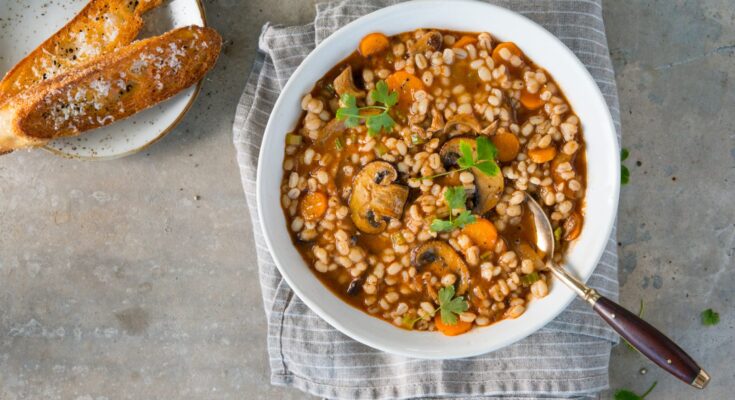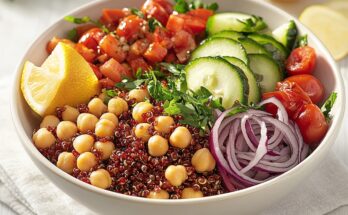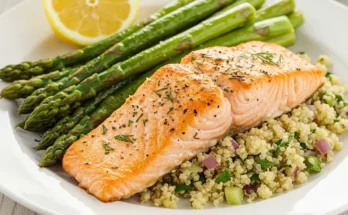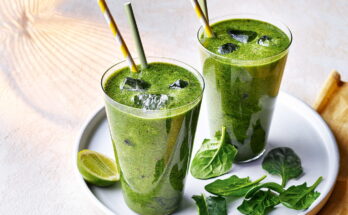Managing blood sugar can feel overwhelming, especially with all the myths surrounding carbohydrates. Many believe that people with diabetes should avoid all carbs, but that’s far from the truth. In fact, choosing the right kind of carbohydrates—like fiber-rich whole grains—can be one of the smartest moves for better blood sugar control. And when it comes to the best grain for the job, dietitians recommend one above the rest: barley.
Why Barley Stands Out for Blood Sugar Management
Barley is a whole grain packed with fiber, antioxidants, and nutrients that help slow digestion, reduce glucose spikes, and fight inflammation. Unlike refined grains like white rice or white bread, which can cause quick blood sugar spikes, barley digests slowly, allowing for more stable blood sugar levels throughout the day.
Key Benefits:
-
High in soluble fiber (especially beta-glucan)
-
Helps slow glucose absorption
-
Rich in antioxidants
-
Supports overall digestive health
-
Inexpensive and easy to cook with
How Carbs Impact Blood Sugar
Not all carbs are created equal. Refined carbs, such as pastries or white bread, lack fiber and are quickly absorbed, causing sharp spikes in blood sugar. In contrast, whole grains like barley are complex carbohydrates that provide slow, steady energy. Thanks to their high fiber content, they help prevent sudden blood sugar crashes and support insulin regulation.
Barley Nutrition (Per ¼ cup uncooked hulled barley):
| Nutrient | Amount |
|---|---|
| Calories | 177 |
| Carbohydrates | 36 g |
| Fiber | 8 g |
| Protein | 6 g |
| Fat | 1 g |
| Potassium | 226 mg |
| Magnesium | 66 mg |
| Phosphorus | 132 mg |
Why Barley Is a Blood Sugar-Friendly Super Grain
1. It’s a True Whole Grain
Barley retains its bran, germ, and endosperm, providing all the nutrients found in the original grain. Research shows that replacing refined grains with whole grains like barley can reduce A1C levels and improve glucose metabolism in people with diabetes.
2. It’s Loaded with Soluble Fiber
Barley is especially rich in beta-glucan, a form of soluble fiber known to slow digestion, reduce sugar absorption, and improve insulin sensitivity. Studies show that just 5g of beta-glucan daily can significantly lower A1C—a key marker of long-term blood sugar control.
3. It’s High in Antioxidants
Barley contains phytochemicals and plant-based antioxidants, such as flavonoids and phenolic acids, which help fight inflammation—a major factor in insulin resistance and diabetes complications.
4. It’s Incredibly Versatile
Barley works in soups, salads, stews, stir-fries, and even as a substitute for pasta or rice. Try:
-
Swapping noodles for barley in chicken soup
-
Mixing cooked barley with beans and greens for a power-packed salad
-
Adding cooked barley to casseroles and grain bowls
How to Add More Barley to Your Diet
Here are a few simple ways to enjoy barley regularly:
-
Add to soups for bulk and fiber
-
Mix with rice to reduce the glycemic impact of a high-carb meal
-
Make a warm breakfast bowl with barley, nuts, and cinnamon
-
Use barley as a base for grain salads, mixed with lemon juice, olive oil, and fresh herbs
For best results, opt for hulled barley, which is less processed and higher in nutrients compared to the more common pearled barley.
The Bottom Line
Carbohydrates aren’t the enemy—especially not whole grains like barley. Instead of cutting carbs completely, focus on choosing the right ones. Whole grains, especially barley, are not only diabetes-friendly but also contribute to better digestion, heart health, and reduced inflammation.
If you’re managing blood sugar or simply want to eat smarter, barley deserves a place in your pantry. It’s affordable, versatile, and backed by science for improving metabolic health.



